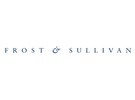Frost & Sullivan’s latest analysis, 'Global Food and Beverage (F&B) Packaging Market, Forecast to 2030', reveals that the need to reduce material usage and develop more sustainable, durable and lighter-weight packaging solutions with lower production costs are key drivers supporting steady market development. Utilizing innovative packaging materials, advancing processing and additives through technological improvements and an uptick in eCommerce distribution will further augment market expansion. While revenue is expected to increase modestly, recording a compound annual growth rate (CAGR) of 1.2% from 2018 to 2030, unit shipment by weight is set to decrease in the short term due to a sustained drive for lighter-weight packaging.
“With rising concerns around plastic pollution and stringent government regulations, manufacturers are seeking alternatives to plastic packaging. This is resulting in an uptick in use of paper and aluminum-based packaging or other non-plastic materials such as biodegradable foods or resin,” said Christopher Shanahan, Global Director, Chemicals, Materials and Nutrition, Frost & Sullivan. “Paper and aluminum are both recycled at high rates and are seen as viable alternatives to plastic with biodegradable plastic films becoming more common as new degradable resin is adopted.”
To differentiate themselves in a well-established, highly consolidated, and competitive market, packaging material suppliers are focusing on specific products such as flexible materials, rigid plastics, and coatings for sachets and pouches. Minimizing packaging costs is a priority so there is strong competition among manufacturers to provide the most cost-effective solutions to customers, including eco-friendly, lightweight products.
“Although manufacturers have already reduced the thickness of bottles and other packaging, they are now looking toward further downgauging and design improvements to make packaging more cost-effective,” observed Shanahan. “For instance, designs such as droplet-shaped bottles have been shown to increase volumes without expanding the package weight.”
F&B vendors can make the most of key opportunities in the market by:
- Exploring environment-friendly sources of plastics, such a plastic derived from corn, or natural products such as banana leaves.
- Creating novel packaging solutions with advanced materials.
- Utilizing the same type of packaging material across several applications to reduce production and processing costs.
- Exploring emerging markets such as APAC, the Middle East, and Africa.
- Reducing material and transportation costs by decreasing the thickness of packaging materials.
Frost & Sullivan’s recent analysis, 'Global Food and Beverage Packaging Market, Forecast to 2030', explores the factors and trends that have shaped the food and beverage packing landscape, the challenges that lie ahead, and the opportunities that can be tapped. The market is analyzed in terms of different packaging material segments, including flexible materials, rigid plastics, glass, metal, and other packaging materials used for containers and closures.
Global Food and Beverage Packaging Market, Forecast to 2030 is part of Frost & Sullivan’s global Future of Chemicals, Materials and Nutrition Growth Partnership Service program.
For more information: 
Jacqui Holmes
Email: jacqui.holmes@frost.com
www.frost.com
